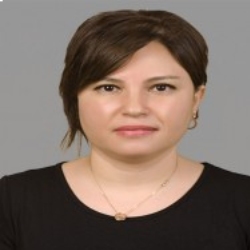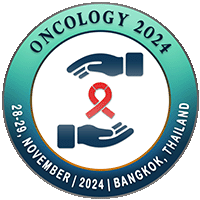
Efsun Somay
Baskent University, TurkeyTitle: Predicting Teeth Extraction After Concurrent Chemoradiotherapy in Locally Advanced Nasopharyngeal Cancer Patients Using the Novel GLUCAR Index
Abstract
Objective: To evaluate the value of the newly created GLUCAR index in predicting tooth extraction rates after concurrent chemoradiotherapy (C-CRT) in locally advanced nasopharyngeal carcinomas (LA-NPC).
Methods: 187 LA-NPC patients who received C-CRT were retrospectively analyzed. The GLUCAR index was defined as 'GLUCAR= (Fasting Glucose × CRP/Albumin Ratio] by utilizing measures of glucose, C-reactive protein (CRP), and albumin obtained on the first day of the C-CRT. Receiver operating characteristic (ROC) curve analysis was used to ascertain the most suitable pre-CCRT GLUCAR cut-off value that exhibits a significant interaction with the rates of tooth extraction after C-CRT.
Results: The optimal GLUCAR cut-off was 31.8 [Area under the curve (AUC): 78.1%; sensitivity: 70.5%; and specificity: 70.7%, Youden: 0.412], dividing the study cohort into two groups: GLUCAR˂ 1.8 (N=78) and GLUCAR≥31.8 (N=109) groups. A comparison between the two groups found that the tooth extraction rate was significantly higher in the group with GLUCAR≥31.8 [84.4% vs. 47.4% for GLUCAR˂31.8; Odds ratio (OR): 1.82; P<0.001]. In univariate analysis, the mean mandibular dose (MMD)≥38.5 Gy group (76.5% vs. 54.9% for <38.5 Gy; OR: 1.45; P=0.008), mandibular V55.2 Gy group ≥40.5% (80.3 vs. 63.5 for <40.5%, P=0.004, OR; 1.30), and being diabetic (71.8% vs. 57.9% for non-diabetics; OR: 1.23; P=0.007) appeared as the additional factors significantly associated with higher tooth extraction rates. All four characteristics remained independent predictors of higher tooth extraction rates after C-CRT in multivariate analysis (P<0.05 for each).
Conclusion: The GLUCAR index, first introduced here, is a robust biomarker in predicting the post-C-CRT rates.
Biography
TBA

